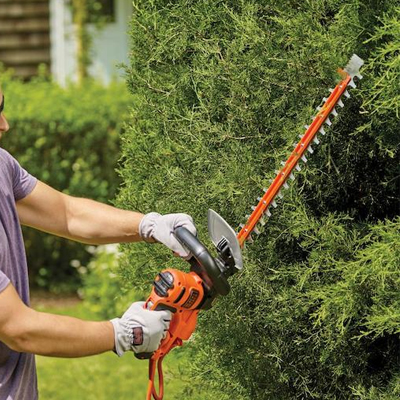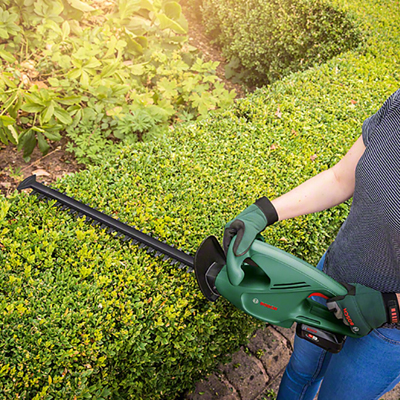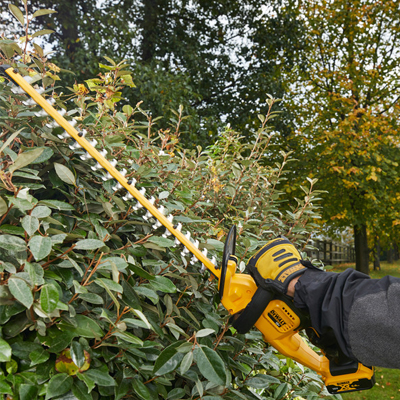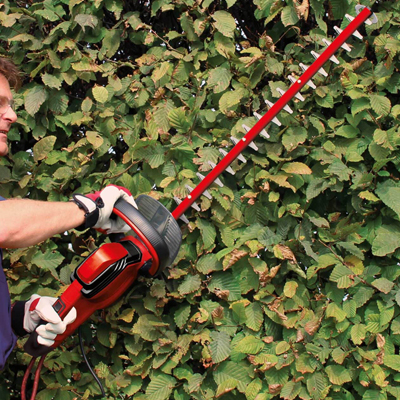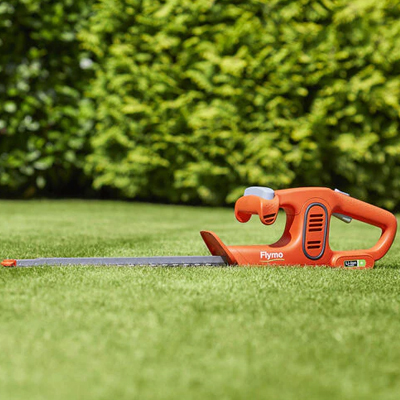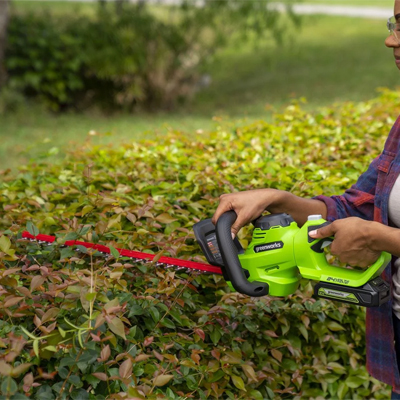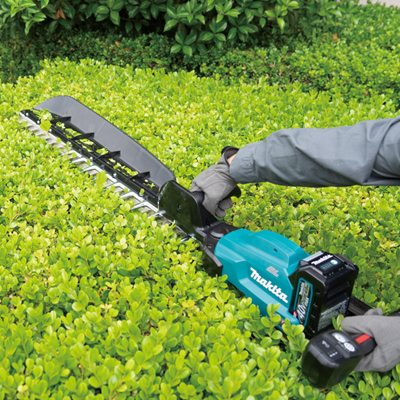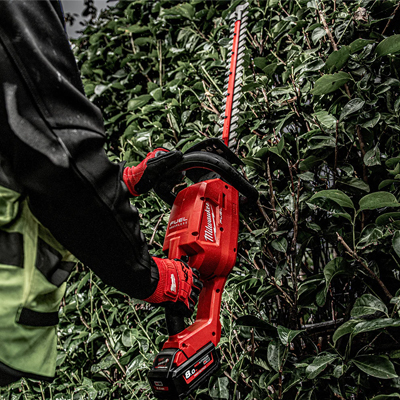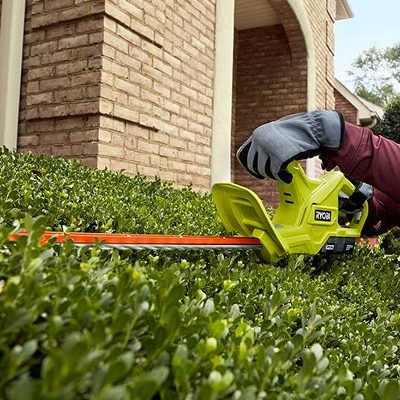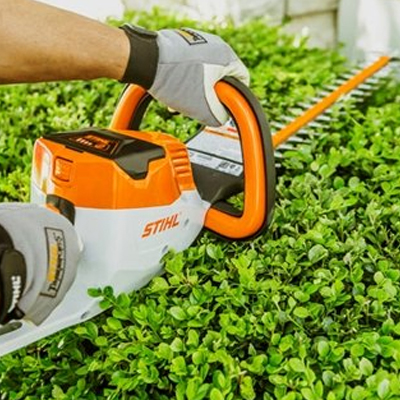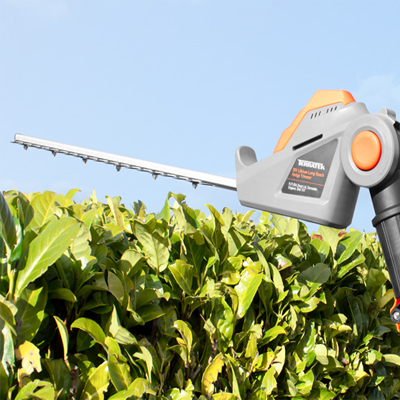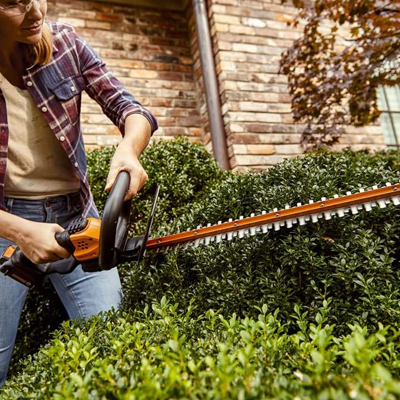Trimmers and hedge cutters are your trusty companions when it comes to maintaining the beauty and vitality of your outdoor spaces. These versatile garden tools come in various styles and configurations, each finely crafted to handle specific landscaping tasks with precision and efficiency. Trimmers, also affectionately known as string trimmers or weed eaters, work wonders in edging and snipping grass in those tricky nooks and crannies where lawnmowers can't quite reach. They're equipped with a whirling nylon string or a cutting blade that effortlessly slices through overgrown grass, weeds, and even small brush.
When it's time to invest in trimmers and hedge cutters, making an informed choice is paramount to ensure that you're getting the right tools for your unique landscaping needs. Start by assessing the size and scale of your outdoor area. For smaller lawns and gardens, a lightweight electric trimmer might be the cat's whiskers, offering a user-friendly experience and agility. On the other hand, larger properties with substantial hedges and shrubs could benefit from a robust gas-powered hedge cutter, ready to take on heavier workloads.
Types of Trimmers & Hedge Cutters
Gas-Powered Hedge Trimmers:
Gas-powered hedge trimmers are the powerhouse of heavy-duty tasks. They typically run on 2-stroke or 4-stroke engines, delivering exceptional cutting prowess. These trimmers excel in larger properties with extensive hedges, providing the freedom to move around without the constraints of a power source. However, keep in mind that they can be bulkier and noisier compared to their electric counterparts, and they require regular maintenance.
Electric Hedge Trimmers:
Electric hedge trimmers are available in both corded and cordless models. Corded versions offer unwavering power but require proximity to an electrical outlet. Cordless models operate on rechargeable batteries, offering flexibility and ease. They work quietly, leaving a minimal environmental footprint, and are ideal for smaller to medium-sized yards. Additionally, they generally require less maintenance compared to their gas-powered counterparts.
Pole Hedge Trimmers:
Pole hedge trimmers come to the rescue with their extended reach, thanks to a telescoping shaft or elongated blade. These tools are invaluable for trimming tall hedges, bushes, or tree branches, all without the need for a precarious ladder. They come in both gas-powered and electric varieties, allowing you to choose based on personal preferences and yard dimensions.
Hedge Shears:
Hedge shears are manual precision tools crafted for meticulous trimming. Consisting of two blades with handles, you wield them by hand to shape and fine-tune your hedges. While they require more physical effort, they offer complete control over the trimming process, making them perfect for intricate designs.
String Trimmers (Weed Eaters):
String trimmers, often lovingly referred to as weed eaters, are versatile do-it-all tools used for edging and snipping grass and weeds in those pesky, hard-to-reach spots—along fences, walls, and tree trunks. They wield a swiftly spinning nylon string or line to make quick work of unruly vegetation. String trimmers come in both gas-powered and electric versions, with cordless models gaining popularity due to their hassle-free nature.
Brush Cutters:
Brush cutters are the workhorses of the gardening world, designed to conquer thick undergrowth, tall grass, and woody overgrowth. They're often equipped with a metallic blade or cutting head ready to take on demanding tasks. Brush cutters are commonly enlisted for landscaping and clearing overgrown areas.
Topiary Trimmers:
Topiary trimmers are specialized tools tailored for sculpting shrubs and hedges into intricate and ornamental forms, a common sight in formal gardens. These tools boast fine, precision blades that lend themselves to detailed shaping and sculpting of plants.
Hedge Trimmer Attachments for Multi-Tools:
Some multi-tools, those with the versatility of interchangeable attachments, offer nifty hedge trimmer add-ons. These attachments allow you to transform a single tool into a hedge trimmer, providing adaptability and cost savings for homeowners with diverse landscaping needs.
Features:
- Power Sources: Trimmers and hedge cutters can be powered by electricity (corded or cordless) or gas. Electric models often weigh less and operate more quietly, while their gas-powered counterparts boast added power for those heavy-duty tasks.
- Adjustable Handles: A good number of models come equipped with adjustable handles that you can customize for your comfort and ease of use, keeping fatigue at bay during those extended sessions.
- Blade Length and Type: Hedge cutters come with varying blade lengths and types (single-sided or double-sided). Longer blades help trim larger areas swiftly, whereas shorter ones offer more maneuverability for precision work.
- Rotating Heads: Some hedge cutters feature rotating heads, allowing you to trim at various angles, simplifying the process of shaping hedges and accessing tight spots.
- Anti-Vibration Technology: Many trimmers and hedge cutters incorporate anti-vibration technology, a notable perk for reducing operator fatigue and minimizing the risk of hand-arm vibration syndrome (HAVS).
- Safety Features: Safety features include guards to protect against debris, blade covers, and safety switches to prevent accidental starts.
- Telescopic Poles: Pole hedge trimmers often include telescopic poles that extend to reach high branches and towering hedges, all without the hassle of climbing up a ladder.
Benefits:
-
- Efficient Trimming: Trimmers and hedge cutters simplify the task of managing overgrown grass, weeds, and unruly hedges, saving you precious time and effort compared to manual tools.
- Precise Shaping: These tools allow for precise shaping of hedges and shrubs, helping you achieve a tidy and well-kept garden with ease.
- Versatility: Trimmers and hedge cutters can handle a variety of vegetation, from grass and weeds to robust branches, making them versatile tools for a range of landscaping tasks.
- Improved Plant Health: Regular trimming and pruning with hedge cutters encourage new growth and sustain the health of your plants and shrubs.
Enhanced Safety: Safety features such as debris guards and blade covers keep you protected from flying debris and accidental encounters with the blades.
Safety Considerations:
-
- Wear Protective Gear: Whenever you're working with trimmers and hedge cutters, make sure to outfit yourself in the appropriate safety gear, including eye protection, ear protection, gloves, and sturdy footwear.
Read the Manual: Get familiar with the user manual tailored to your specific tool. Follow the manufacturer's instructions for operation, maintenance, and safety protocols.
Inspect the Tool: Before each use, give the trimmer or hedge cutter a once-over to ensure it's free of damage, loose components, or worn blades. Verify that all safety features are functioning as intended.
Maintain a Clear Workspace: Clear your workspace of debris, stones, and obstacles that could be thrown about by the tool during operation.
Use Both Hands: Operate the tool with a firm grip using both hands, maintaining the proper posture to retain control and balance.
Keep Others at a Safe Distance: Make sure that bystanders, children, and pets are at a safe distance while you're operating the equipment.
Power Down When Idle: Always turn off the trimmer or hedge cutter when not in use and never leave it unattended while it's running.


